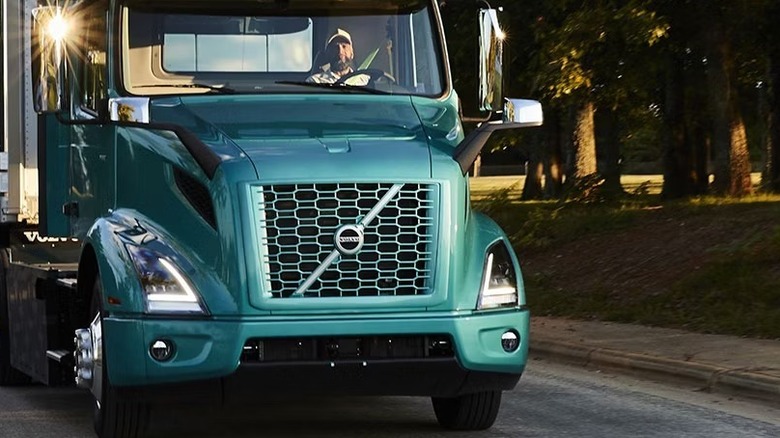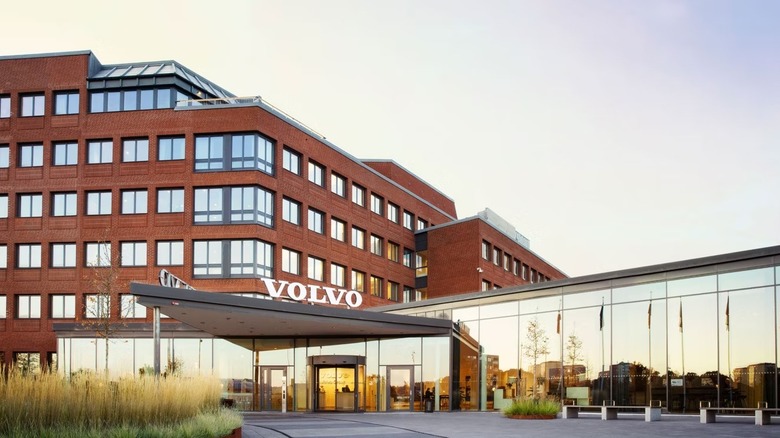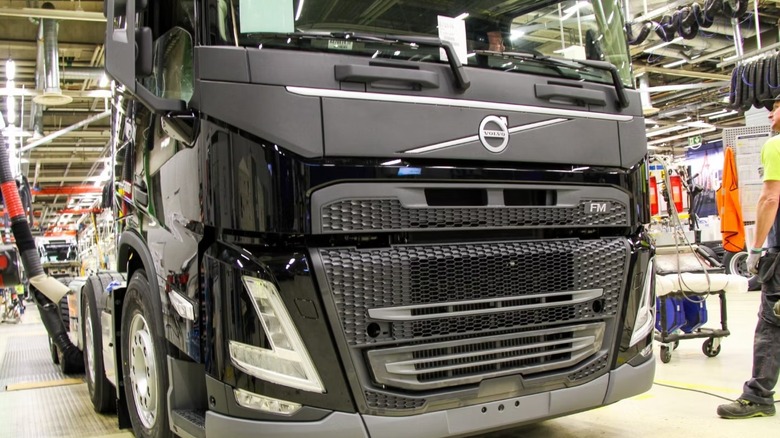Who Makes Volvo Semi-Trucks And Where Are They Made?
When Volvo made its first vehicle in 1927, it was an open car known as the ÖV4, typically referred to as Jakob. Just a year later, the LV Series 1 entered production and became Volvo's first truck. It was designed for Sweden's weather and road conditions, and it didn't take long for it to gain traction among Swedes. From here, Volvo trucks evolved into full-blown semi-trucks. The company eventually introduced sleeper compartments within the cab, designs focusing on aerodynamics and gas mileage, and more modern transmission and safety solutions to its trucks.
Although Volvo started out in Sweden, it grew globally and is now one of the most popular semi-truck brands in America and Europe. Volvo semi-trucks are also present in South America, Asia, the Middle East, and Africa. With such an extensive reach, it begs the question: Who makes Volvo semis, and where exactly are their production facilities located?
Who makes Volvo semi-trucks?
Volvo semis are produced by Volvo Trucks, headquartered in Gothenburg, Sweden. It's one of the multiple brands that belong to the Volvo Group, along with Renault Trucks, Mack Trucks, Nova Bus, and Prevost. While the Volvo Group is primarily known for its trucks and vehicle engines, it also offers construction and mining equipment, industrial power generation engines, and even financial solutions.
Volvo started in 1927 as an independent company but was listed on the Swedish Stock Exchange by 1935. It then grew enough to acquire a host of companies over the years. These include engine maker Pentaverken in 1935, construction equipment supplier AB Bolinder-Munktell in 1950, and several other firms, like the American automobile producer White Motor Corporation and competitors like Mack Trucks and Renault Trucks.
Out of all the Volvo Group's current shareholders, 41% are non-Swedish (the majority of which are from the U.S.), 30% are Swedish institutions, 15% are Swedish mutual funds, and 14% are Swedish private investors. Since 2009, the firm's biggest shareholder has been the Sweden-based holding company Industrivärden. It commands 28% of the votes at the Volvo Group's annual general meetings. The second-largest investor is the private Chinese company Zhejiang Geely Holding Group, or simply Geely Holding, which owns the rights to 14.7% of votes. Geely Holding invested in the Volvo Group back in 2017. Interestingly, this same conglomerate owns and makes Volvo Cars, which it acquired from Ford in 2010.
Where Volvo builds its semi-trucks
Volvo Trucks has production presence across the globe. One of its facilities, called the New River Valley (NRV) Plant, is in Dublin, Virginia. Being the sole supplier for North America, this Volvo assembly site is understandably large and the biggest of its kind in the world. The facility covers 566 acres, with the factory itself taking up a massive 2.3 million square feet. The NRV facility is responsible for building Volvo models like the VAH, VNR Electric, and the new VNL.
Another U.S.-based Volvo Truck plant is in Hagerstown, Maryland. Established in 1961, this 1.5-million-square-foot center is where Volvo builds powertrain solutions, specifically the I-Shift transmission and D11 and D13 engines. Volvo also has a separate remanufacturing center in the U.S., located in Middletown, Pennsylvania, which manages the restoration of end-of-life Volvo truck parts.
In Europe, Volvo trucks come to life in four locations: Blainville-sur-Orne in France, Gothenburg and Umeå in Sweden, and Ghent in Belgium. The Blainville factory manufactures medium-duty trucks, while both Swedish facilities handle heavy-duty models such as the FH, FH16, and FMX. The Ghent site, on the other hand, is home not only to a truck production line but to a battery assembly plant for the electric models.
Volvo Trucks also operates a powertrain site in Curitiba, Brazil; an FH and FM truck assembly line in Durban, South Africa; and a multi-purpose center in Bangalore, India. For Australian and New Zealand customers, a dedicated factory found in Queensland, Australia caters to the unique needs in these two countries. It produces models like the FM, FH16, FMX, and the FH, which is Volvo's EV challenger to the Tesla Semi.


